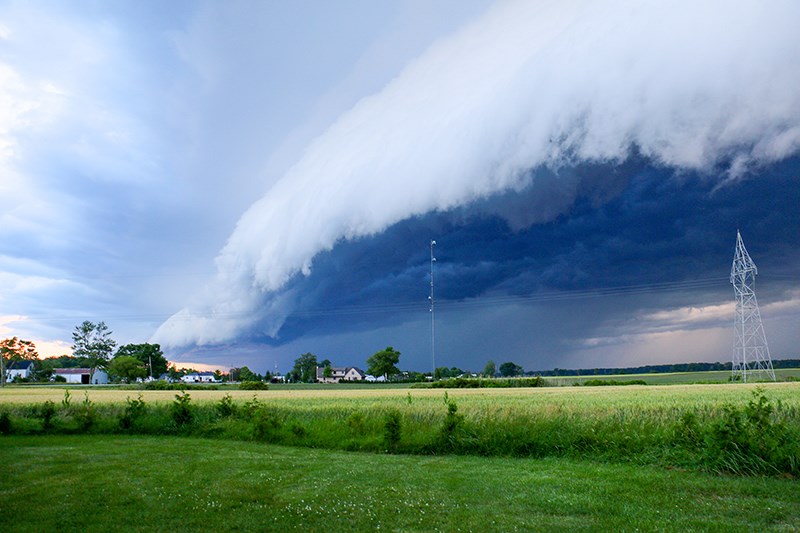Cathy Dobson
Imagine Sarnia-Lambton with more floods, more droughts and more heat waves.
Imagine Lake Huron fish stocks declining, especially cold-water fish like trout and whitefish.
Imagine livestock suffering heat stress and producing less for the meat, dairy and egg industries.
Those are a few of the impacts climate change will have over the next 80 years without serious intervention, according to a group of Queen’s University research students.
“It leaves us with an unsatisfying feeling,” said Nathan Holman, a second-year law student and member of the five-person study group. “We don’t know the solutions but we know more research is needed.
“There’s so much that can be done,” he added. “We want municipalities and businesses to look at these models and establish what part they play.”
Unless solutions are implemented the Great Lakes will become, not an attraction, but a deterrent, said fellow researcher Lukas Wolf, a fourth-year civil engineering student.
The students worked with Sarnia’s BlueGreen Innovation Group to study various climate change models and determine how increasing water and air temperatures will alter life for the 30 million people and 3,500 species of plants and animals on the Great Lakes.
“Models are pretty credible in making projections,” said Ed Brost of BlueGreen Innovations.
To effect change we have to understand the repercussions of greenhouse gas emissions, Brost said.
“We really do need to get our heads around the human use of fossil fuels.”
The models indicate residents in Sarnia-Lambton and the Great Lakes region will experience increased flooding, more algae blooms, rising shipping costs and less efficient power generation by the year 2100.
The models predict air temperature could rise three to four degrees Celsius, and lake temperatures will climb four to eight degrees.
Sarnia-Lambton MP Marilyn Gladu attended the research presentation held at the local Chamber of Commerce offices and said she will consider the study results during federal government policy sessions.
“Climate change is an international problem,” Gladu said. “Canada only contributes 2% of emissions worldwide, so we can’t really make an impact on a global problem.
The federal government is focused on emission reduction, she added. But more attention is needed on the potential outcomes of climate change.
“What are we going to do about the longer growing season? What are we going to do about flooding in Sarnia-Lambton and the increase in all these insurance claims?” asked Gladu.
Municipal infrastructure hasn’t been engineered to handle more severe and frequent weather events, Gladu added.
“The solutions have to take that into consideration.”
Altering the impact of climate change requires large-scale change, but public awareness is an important first step, said research student Rachel Amirault, in fourth-year chemical engineering.
“People don’t realize how much greenhouse gases are used to manufacture what we use.”
The study was financed by RBC as part of a Technology, Engineering and Management course and conducted under the guidance of university staff and BlueGreen Innovations Group.
Also participating were students Alana Walsh and Jessica Nahulan.
